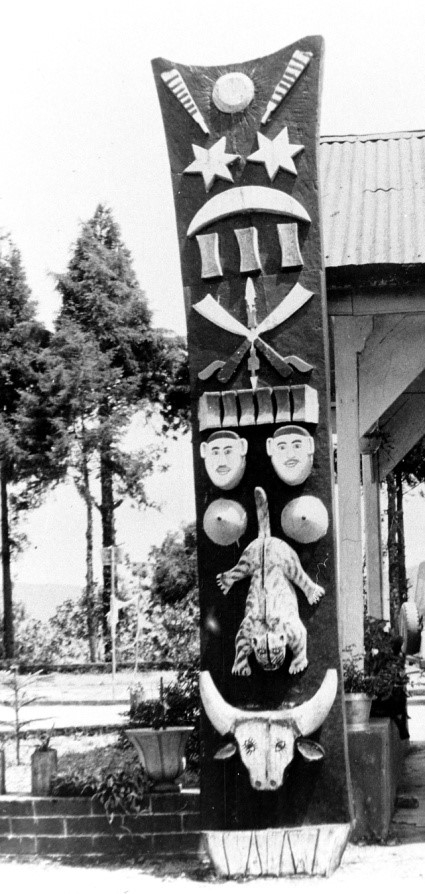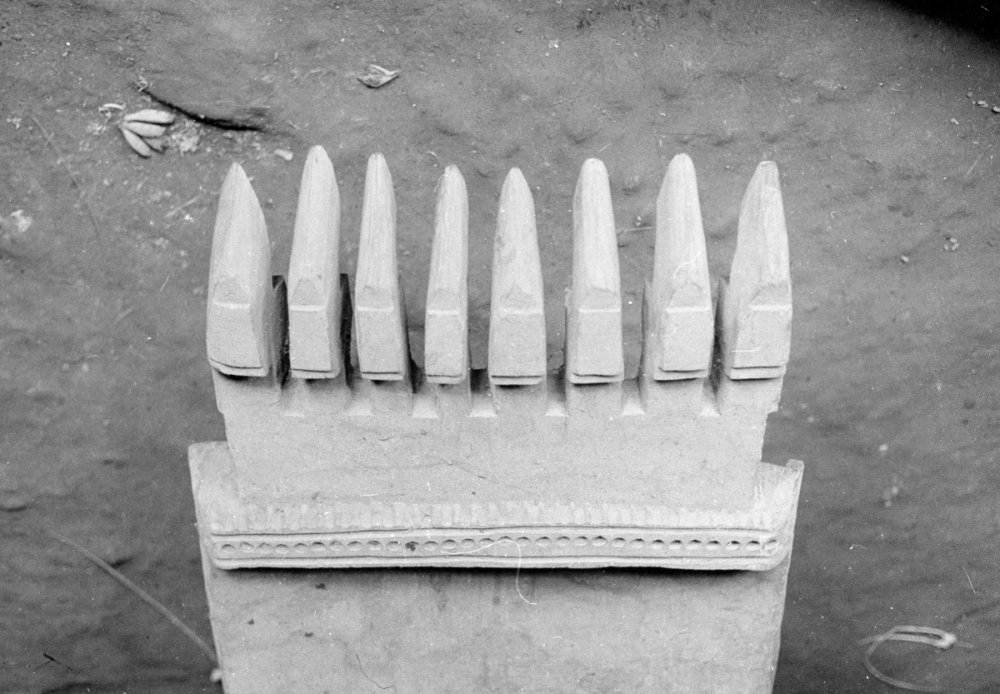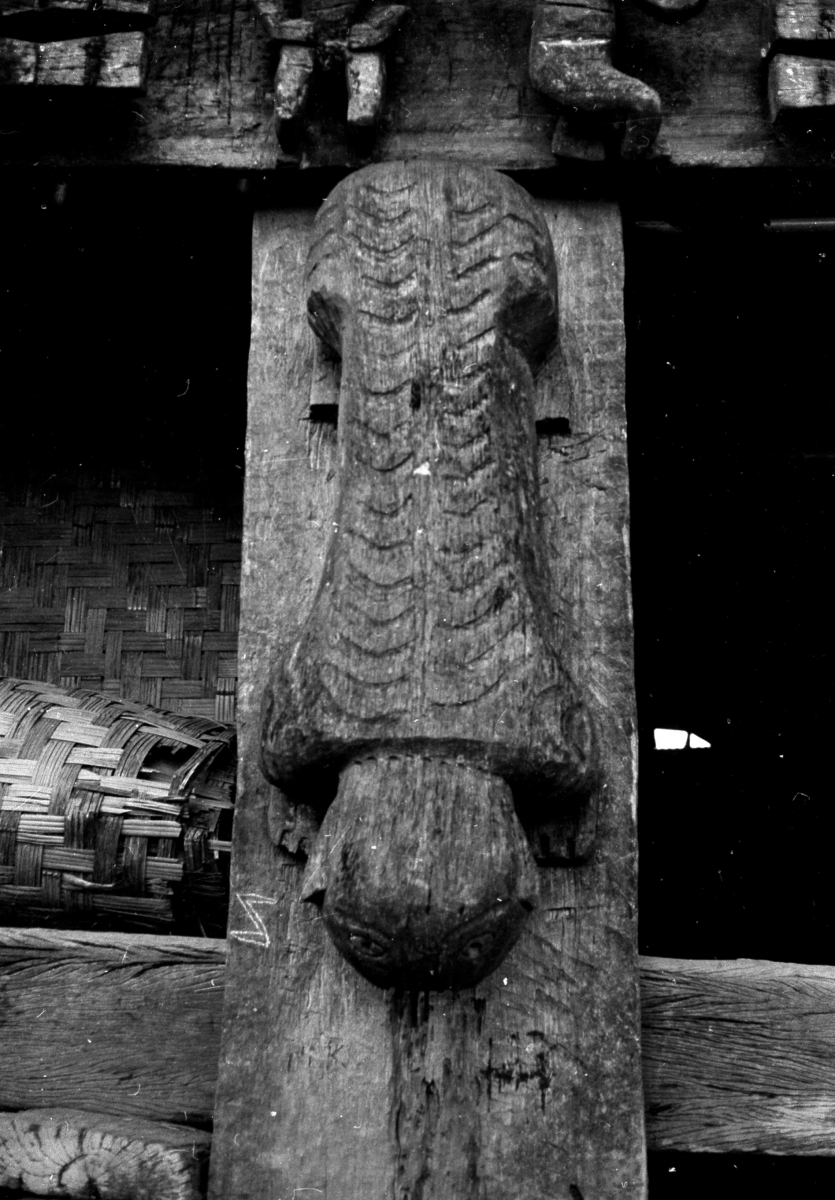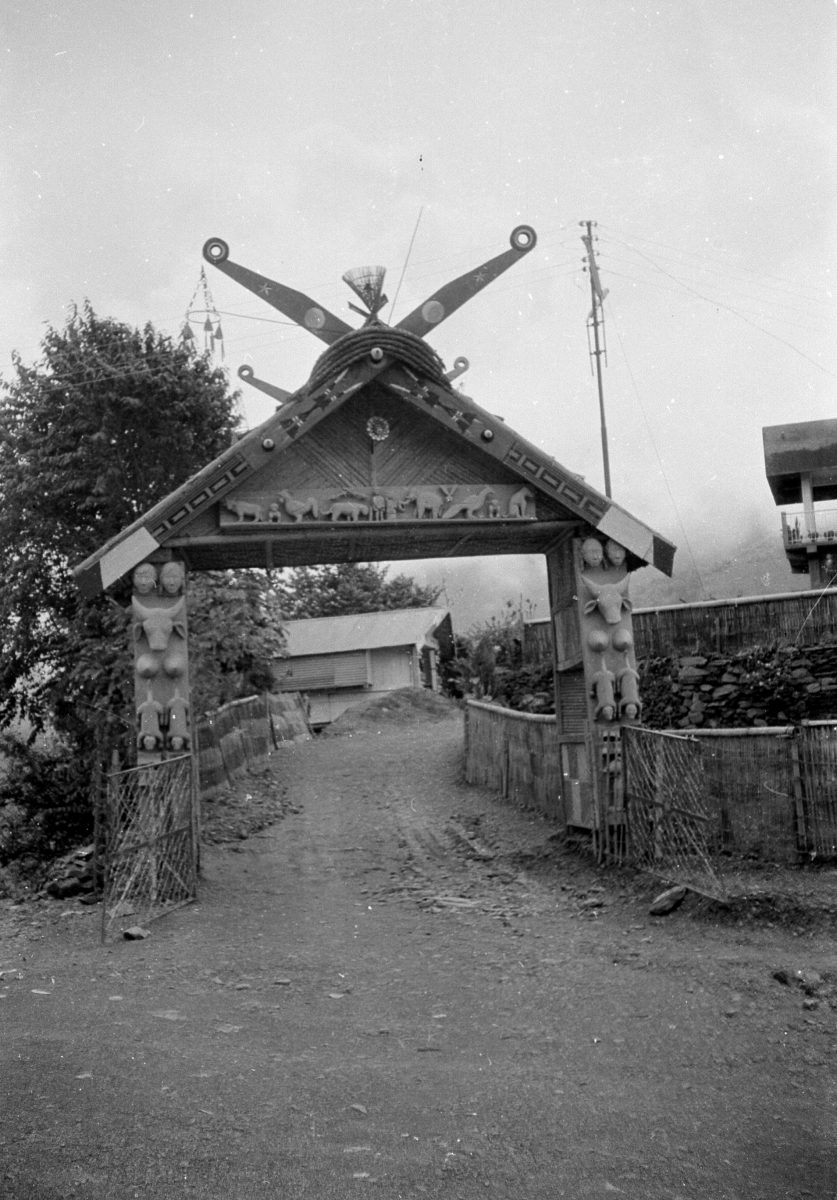
The typical wood-carved ethnic art motifs of the Naga people of north-eastern India were abstractions of mostly animal forms, with a defined relationship to important aspects of the ancient Naga animistic tradition. Each motif had a symbolic aspect. Human figures or sculpted heads related to fertility or the head-hunting warrior tradition were inscribed on wall panels or as individual ritual art pieces. Bison heads, tigers, elephants, snakes, hornbills, barbets, lizards and monkeys were the common animal motifs all of which were symbolic of variously favoured human traits like valour, fertility and power or strength which were the core values of the traditional social system. Within the large pantheon of symbols, the hornbill and the Indian bison or mithun were the most common motifs among the diverse Naga tribes and had great relevance and symbolism in the Naga tradition. The representation of these animal, human and other forms in wood carving was largely found in architectural fenestration or as façade elements.
The animal and celestial motifs found in Naga architecture were stylised with an intrinsically stark bold beauty. Decorative elements like the carved front wall panels were found only in the chief’s house or adorning the house façades of men of social distinction. These planks were carved in relief with mithun heads, tigers, meat chunks and women’s breasts, signifying social status, power, wealth and prosperity.
Major Animal Symbols: Mithun, hornbill, barbet, tiger
The mithun (gayal) or the Indian bison (bos fontalis) is synonymous with Naga culture. Being semi-domesticated, and having a designated owner even though it lives in fenced-off tracts in the wild, the human-animal relationship is unique. It is the state animal of both Nagaland and Arunachal Pradesh. The mithun head or horns are almost a signature of Naga architecture inasmuch as they overshadow all other motifs in their magnificence and variety especially in the vernacular wooden architecture of the many tribes of Nagaland. The mithun is a powerful symbol of wealth, prosperity and fertility and dignifies house façades in the form of mithun head carvings which traditionally declared the social status of the owner.
The magnificent Great Indian Hornbill is considered to be the largest member of the hornbill family and its statuesque appeal contributes to its huge significance in the Naga cultural ethos. Scientifically known as Buceros bicornis, it is found in the forests of the Indian subcontinent, the Malay Peninsula and Sumatra, Indonesia. Interestingly the hornbill mates singly for many years and sometimes even for an entire lifetime and this is perhaps another reason why it is held in such high esteem by the Naga tribes.

Hornbill heads carved on the Konyak chief's (Ang) bed
The bright yellow and black casque resting above the huge bill of the bird adorns many a Naga headdress, as also its striking black and white feathers which are highly prized and priced! As befits its majestic appearance, it remains a symbol of the chief especially among the Konyak tribe, and hence denotes both power and status.
The Great Himalayan barbet (Megalaima virens) is an Asian barbet and the largest of its kind. It gets its name from the bristles that fringe its heavy bill. The adult is very colourful with a blue head, large yellow bill, brown back and breast, green and blue streaked yellow belly and red vent. It is found in house ornaments of the Sema tribe and carvings of the Konyak morung or dormitory where it symbolizes luck and consequent fame.

Tiger wood carving on the façade of the men's dormitory (morung), Konyak tribe, Mon district
In the Naga ethos, the Indian tiger has very little competition as a symbol of strength. This is accentuated by its overpowering presence as a figure sprawling on the centrefold of the façades of morungs or men’s dormitories which competed for power in the Naga settlements of old. These representations were more common amongst the Eastern Naga although some of the Western Nagas like the Sema also held the tiger in high esteem.

Front gate with carved motifs, Sema tribe, Zunheboto district
Names of animals and the qualities that they represent
Motif Symbolism
Mithun fertility, prosperity, wealth
Hornbill status, power, royalty
Tiger courage, strength, protection
Elephant strength
Bear fame as a warrior/hunter
Monkey agility, skill
Great Barbet luck, fame
Meat chunks feasts of merit given by the house owner
Women’s breasts success in love
Sun, moon, stars power, prowess in war











